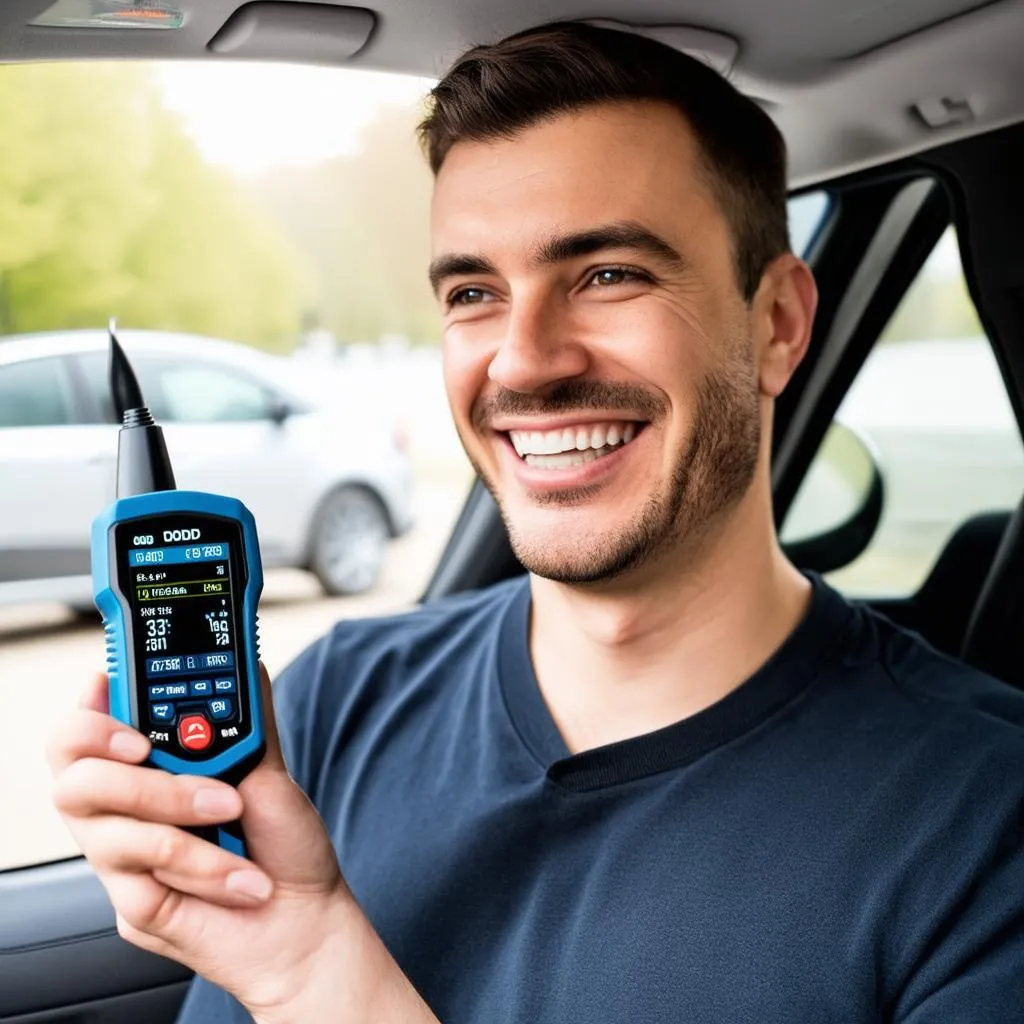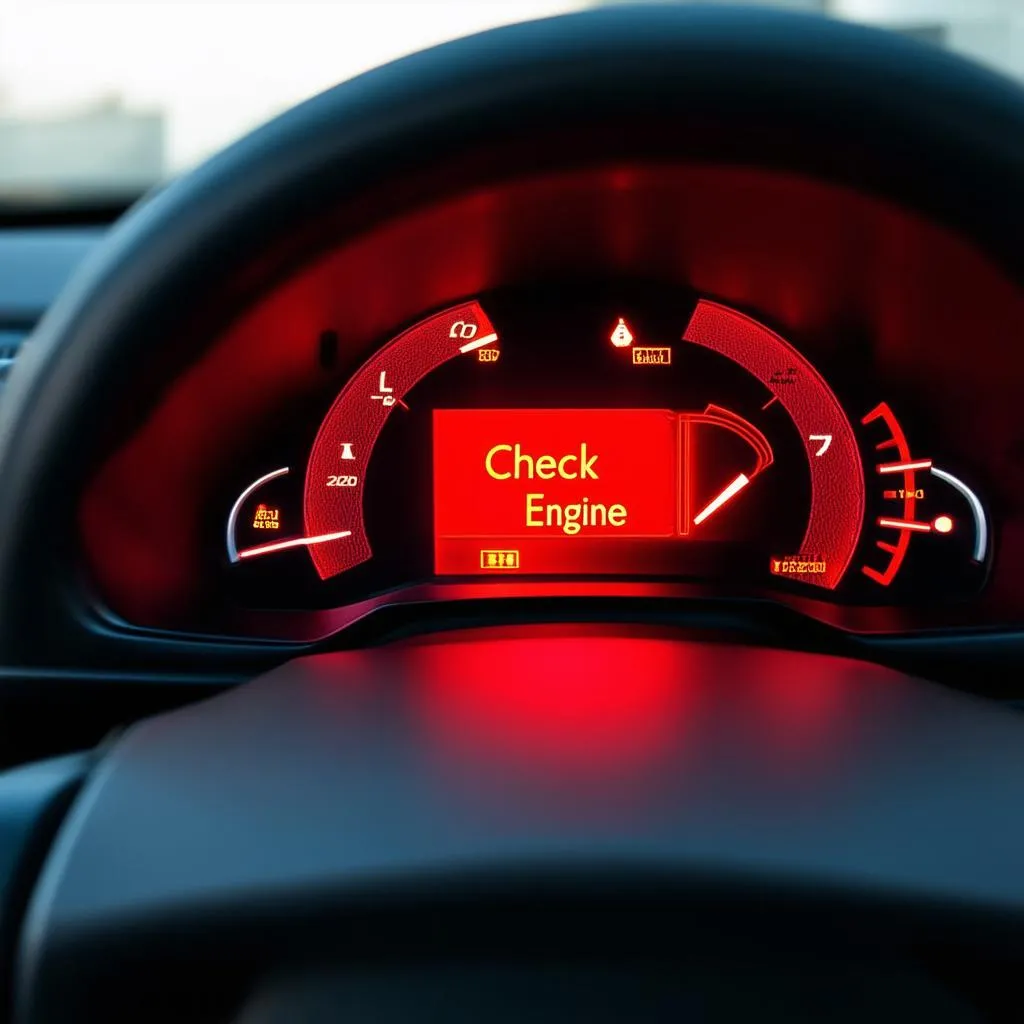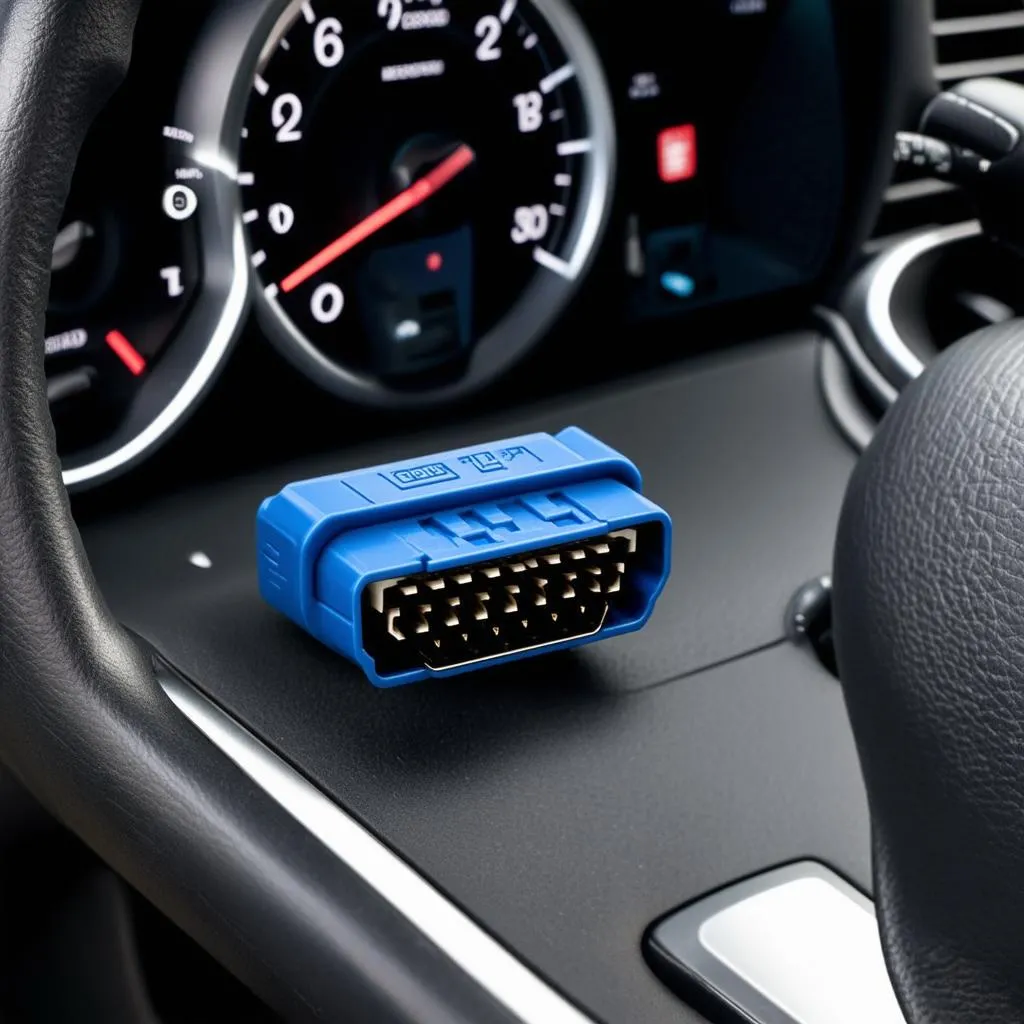“The check engine light is on, what do I do?” – This is a question that has plagued countless drivers, causing worry and confusion. While a lit check engine light can be a sign of a serious issue, it’s often a simple problem that can be quickly addressed. And with a handy OBD scanner, you can often reset the light and identify the issue yourself. But what exactly is an OBD scanner, and how does it work to reset the check engine light?
Understanding the Check Engine Light and OBD Scanner
Imagine your car as a complex orchestra of moving parts, each performing a unique role. When one instrument malfunctions, it throws the whole symphony out of tune. The check engine light is like the conductor’s baton, signaling that something is amiss.
The OBD (On-Board Diagnostics) system is your car’s onboard “doctor,” a network of sensors that constantly monitor various functions like engine performance, fuel efficiency, and emissions. When a sensor detects a problem, it sends a signal to the engine control unit (ECU), which in turn illuminates the check engine light.
The OBD scanner, also known as a diagnostic tool, is your personal interpreter of this complex automotive language. It plugs into your car’s OBD port (often found under the dashboard), connects to your smartphone or computer, and allows you to:
- Read diagnostic trouble codes (DTCs): These are specific codes that tell you exactly what the issue is, like a “fuel system problem” or a “oxygen sensor malfunction”.
- Reset the check engine light: Once you’ve addressed the issue and made the necessary repairs, the OBD scanner can reset the light and clear the DTCs.
Here’s a real-life scenario: Imagine you’re driving down the road, enjoying the music, when suddenly, the check engine light pops on, throwing you off your groove. You pull over, feeling a pang of anxiety. What now?
This is where the OBD scanner comes in. It’s like your personal automotive detective, helping you get to the bottom of the mystery.
How to Reset the Check Engine Light with an OBD Scanner
Before you begin:
- Consult your car’s owner’s manual: It may provide specific instructions for using an OBD scanner with your particular model.
- Consider the “Why”: Don’t just blindly reset the check engine light. Understanding the underlying problem is crucial. If you’re unsure, consult a mechanic.
Here’s a general guide:
- Find the OBD port: It’s usually located under the dashboard, near the steering wheel. Refer to your owner’s manual or search online for your specific car model.
- Connect the OBD scanner: Plug one end of the scanner into the OBD port and the other end into your smartphone or computer.
- Turn on your car: Most OBD scanners require the engine to be running.
- Read the diagnostic trouble codes (DTCs): The OBD scanner will display the codes, and you can often find explanations online or in a DTC lookup chart.
- Address the problem: Based on the codes, you can either diagnose and fix the issue yourself or take your car to a mechanic.
- Clear the codes: Once the issue is resolved, the OBD scanner will allow you to clear the codes and reset the check engine light.
It’s important to note: While a simple OBD scanner can be a useful tool for resetting the check engine light, it’s not a substitute for proper automotive diagnostics. In some cases, the underlying problem may be more complex and require professional attention.
Why Resetting the Check Engine Light Matters
From a Feng Shui perspective, a flickering check engine light might symbolize disruption and imbalance in the flow of energy within your vehicle. Just like an unharmonious home environment can affect your well-being, a malfunctioning car can disrupt your journey and sense of peace.
By understanding and addressing the underlying issue, you can restore balance and harmony, ensuring a smooth and enjoyable ride.
Common OBD Scanner Questions
Q: What type of OBD scanner do I need?
A: There are various types available, ranging from basic scanners to advanced ones with additional features. For basic tasks like resetting the check engine light, a simple code reader is sufficient. For more in-depth diagnostics, consider a more comprehensive scanner. You can find our recommendations on choosing the right OBD scanner here.
Q: Is it safe to reset the check engine light without addressing the issue?
A: It’s not recommended. While resetting the light temporarily removes the warning, it doesn’t address the underlying problem. Ignoring the issue could lead to more serious damage down the road.
Q: How often should I scan my car with an OBD scanner?
A: It’s a good practice to scan your car periodically, especially if you notice any unusual performance or driving issues. You can also scan your car before a long road trip to ensure everything is in good working order.
Q: What are some other helpful tips for maintaining my car’s electrical system?
A: Regularly check your battery terminals for corrosion, ensure the battery cables are securely connected, and avoid leaving your headlights on for extended periods when the car is off.
Q: Where can I learn more about diagnosing and repairing my car’s electrical system?
A: Check out our comprehensive guides on OBD Inspection in North Carolina and locating the OBD port on specific car models.
Q: Can you tell me where to find the OBD port on a 1996 Jeep Cherokee?
A: You can find the OBD port location for your 1996 Jeep Cherokee here.
Q: Can you tell me where to find the OBD port on a Ford C-Max?
A: You can find the OBD port location for your Ford C-Max here.
Conclusion
A blinking check engine light can be a source of stress, but with the right tools and knowledge, you can take control. By understanding your car’s OBD system and using an OBD scanner, you can often identify and address issues quickly and efficiently. And remember, just like a well-maintained house promotes harmony, a well-maintained car creates a sense of peace and confidence on every journey.
Do you have any questions about resetting the check engine light or using an OBD scanner? Leave a comment below or reach out to our team via Whatsapp: +84767531508 for personalized support.
 OBD Scanner Man
OBD Scanner Man
 Check Engine Light
Check Engine Light
 Car Dashboard OBD Port
Car Dashboard OBD Port